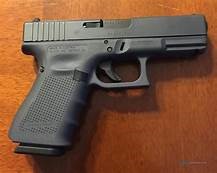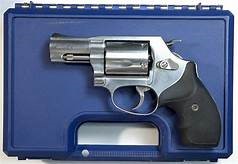Pistols - By Contributor Jager
- Butch Erskine

- Jan 13, 2020
- 5 min read
Pistols
Greetings, this is part 2 of 4 promised articles on various types of firearms. For those that read my earlier article on rimfires I want to make some corrections. The Ruger 10/22 comes with a 10 round magazine, not a 100 round magazine. My second error was a picture of a Savage model 24 instead of a Ruger 10/22. Obviously I need adult supervision but all errors can be blamed on someone else. Lol
Pistols, as described in this article, will be centerfire ones. Centerfire means the firing pin hits the primer that is located in the center of the cartridge base. There are 3 basic types of pistol cartridges as relates to their makeup: brass, steel and aluminum. IMHO brass is best although usually more expensive. Brass cartridges can be reloaded if they are boxer primed. Berdan primed cartridges usually have a crimp around the primer and is used in ammo designed for military use. That method is almost always found on steel and aluminum cases which cannot be reloaded. As a side note I have had both steel and aluminum rounds bind up in steel or aluminum magazines. If you are buying steel or aluminum ammo, make sure it works in your pistol’s magazine. My advice is buy brass.
Pistol caliber weapons are now popular in carbines. I have owned a 9mm carbine and still own a 10mm carbine. There are a great number of guns called pistols which look like rifles. My 10mm carbine is classified as a pistol but looks like a short rifle. If you are not familiar with BATF rules, you must be aware of buying so called pistols having barrels shorter than 16” with fixed stocks. There is a lot of gray area out there, so beware. There are pistols that have what is called a pistol brace installed that are off and on again legal with the BATF. You might have local laws that will restrict you to 10 round magazines and other liberal gun control fantasies. One of the nice things about a pistol caliber carbine is that you can have a pistol and a carbine that fires the same ammo and uses the same magazines. This is not a new concept. Back in the cowboy days, Colt and Winchester made revolvers and rifles that shot the same cartridge.
I am herein listing a few calibers all of which fire in semi-automatic pistols: 25 acp, 32 acp, 380 acp, 9mm, 357 sig, 40S&W, 10mm, and 45acp. Revolver cartridges are : 32 S&W, 38 S&W, 38special, 357mag, 41mag, 44 mag, 45colt, 460S&W, 500S&W. These are the most common but certainly not all of the cartridges you would see. IMHO, the smallest acceptable cartridge in a semi-automatic pistol is the 9mm. In a revolver it would be the 38 special. Again this is my opinion, as a lethal shot with something smaller is much better than a miss with a larger caliber. Smaller caliber bullets often don’t have the power to punch through heavy clothing, and can glance off of automobile glass and other obstructions you might encounter in a defensive gun battle.
My advice is to go to a gun range that rents guns and try before you buy. I will recommend different guns for concealed carry and different ones for home defense. You can’t go wrong with Glock of any make or model. I would recommend a Glock 19 in 9mm as a “do everything” pistol. It is small enough to conceal, and simple to use. With 15 rounds in the magazine and one in the chamber, you should be able to defend yourself well. I like the Glock model 43 also, but I have seen people who don’t grip the gun tightly enough to limp wrist it causing it to malfunction. Limp wristing is a phenomenon commonly encountered by semi-automatic pistol shooters where the shooter's grip is not firm enough. The wrist is not held firm or straight enough to keep the frame of the firearm from traveling rearward while the bolt or slide of the pistol cycles. The Glock model 43 is very small and easily concealed. I like a Kimber Micro 9 for my sometimes carry gun. I have what you would call muscle memory. I know that my Kimber is single action only, meaning I have to take it off safety if the hammer is cocked or thumb back the hammer if it isn’t cocked before it will fire. I do this without thinking about it. My other sometimes carry gun is a Glock 29 in 10mm. The 10mm is a powerful cartridge and not for the novice shooter. I advise novice shooters to purchase snap caps which are dummy rounds that you can use to practice loading your weapon and practice squeezing your trigger.
Revolvers don’t hold as many rounds as a semi-automatic pistols but are reliable and simple. When choosing between the two you need to make sure you can work the slide of the pistol and clear misfires. If you don’t have the strength in your hands to work the slide, then stick with a revolver. Most defensive carry revolvers have a short barrel which limits the effective range to about 15 feet. A trip to the range will verify that. Smith and Wesson, Ruger, and Taurus make some small revolvers that fire the 357 magnum round. The up side is that those revolvers will fire the less powerful and less expensive 38 special round which you can use to practice your marksmanship. Load your revolver with the 357 round for defensive purposes.
I haven’t mentioned types of bullets. JHP means jacketed hollow points. These rounds are a hollowed out lead bullet encased with a copper jacket. On impact they expand to a larger diameter causing a more serious wound. There are specialty rounds like the glazer safety slug which limit the penetration of the bullet. They can prevent innocent bystanders from being hit by a stray bullet that might otherwise penetrate a wall in your home. They work well however for defensive use. FMJ or full metal jackets are usually a lead bullet totally incased with a copper jacket. The FMJ is normally seen in military ammo and are often used for target practice because they are cheaper to purchase. FMJ rounds also feed better in semi-automatic pistols. You need to know that your semi-automatic pistol will reliably feed JHP rounds before you load your magazine for defensive use. There are other types of bullets but the JHP and FMJ are the most common.
Glock 19 S&W Model 60
Glock 19 S&W Model 60
In closing I want to give my opinions about the use of a pistol. A pistol can be easily concealed on your person or in your vehicle. In my state of Tennessee it is legal to carry a loaded pistol in my vehicle without a carry permit. This is not the norm. You need to research the laws in the state where you live and most importantly the states you may travel through. Many people don’t have the money or the desire to stockpile weapons, so a single pistol that will protect you and your family may be the only purchase you will ever make. I still believe a pistol is for fighting your way to your rifle. Regardless of your choice in defensive weapons, practice is the key. Sitting around the house practicing with your snap caps will ingrain that muscle memory that may save your life someday. Practice, Practice, Practice!!!
Jager out
Bravo Echo Out







Comments